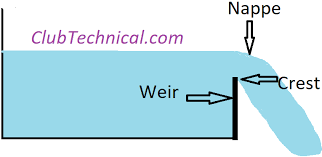Orifice Meter its advantages and disadvantages
What is an Orifice Meter?
The orifice meter is a type of flow
meter used to measure the flow rate of fluids (liquids or gases) based on the
principle of differential pressure measurement.
Construction of Orifice Meter
- Inlet Section: The fluid from one end of
the pipe enters through this section. The diameter of the section depends
on the flow to be measured.
- Orifice Plate: A device used for measuring flow rate,
lowering pressure, or restricting flow is called an orifice plate
- . These plates are usually thin with holes that are installed in
pipes.
- U-Tube Manometer: A manometer monitors
the pressure of fluids.
- A U-tube column filled with mercury serves as the pressure reading
display in a U-tube manometer. One end of it is installed before the
orifice plate and the other end is installed after it.
- Outlet Section: This is the section where the fluid is
discharged.
e-Attempts
Advantages of Orifice Meter
- When compared to other flow metres, such as the venturimeter, the
orifice metre is fairly affordable
- The installation space required by the orifice meter apparatus is
minimal
- Typically, it is narrow enough to fit between two pipes
- Costs to keep it running smoothly are minimal.
- It delivers a very small pressure drop
- This design and fabrication (construction) of orifice meters are
quite simple.
Disadvantages of Orifice Meter
- The minimum pressure required to measure the flow can be
challenging occasionally due to the restrictions on the length of the
vena-contracta
- The fluid viscosity, density, and pressure can have an impact on
the accuracy of the orifice meter
- The overall differential pressure head loss falls in a whopping
range from 40% to 90%
- Discharge coefficient will always be low.
Application of Orifice Meter
The primary function and use of
orifice metre is to measure flow rates, and it can be found in a variety of
applications including refineries, water treatment plants, natural gas
processing plants, petrochemical plants, and oil filtration plants.




Comments
Post a Comment